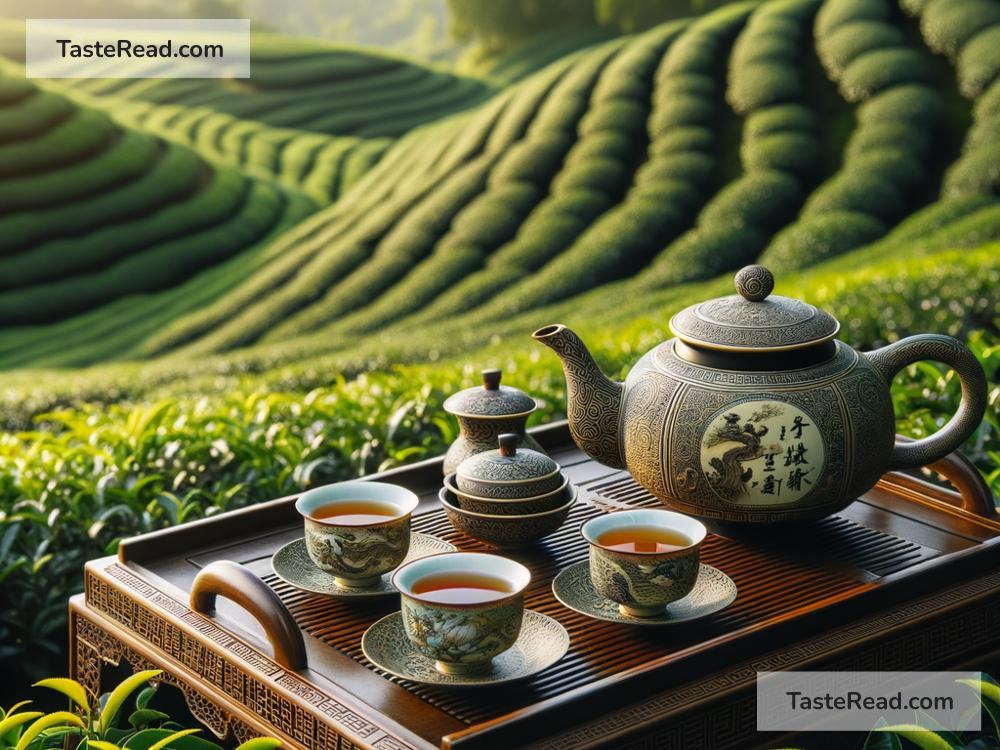The History of Tea in China and Beyond: A Journey Through Time
Tea is one of the world’s most popular drinks, enjoyed by billions of people every day. It has shaped cultures, economies, and traditions across the globe. But where did it all begin? The story of tea starts in China, thousands of years ago, and its journey from a humble leaf to a worldwide phenomenon is truly fascinating.
The Birth of Tea in China
China is the birthplace of tea. Legend says that tea was discovered over 4,000 years ago by Emperor Shen Nong, a mythical figure considered the father of Chinese agriculture and medicine. According to the story, Shen Nong was boiling water near a tea tree one day when a few leaves fell into his pot. Curious about the aroma, he tasted the brew—and tea was born! This tale highlights the ancient roots of tea in Chinese culture.
Historians and archaeologists believe tea was consumed as early as the Shang Dynasty (1600–1046 BCE), though it was initially used as a medicinal drink rather than a daily beverage. By the Tang Dynasty (618–907 CE), tea moved from being medicine to becoming an everyday drink. Tea culture flourished during this period, and the Chinese began cultivating tea plants and experimenting with various ways to prepare it.
During the Song Dynasty (960–1279 CE), tea drinking became an art form, leading to the creation of elaborate tea ceremonies. People began grinding tea leaves into powder and whisking them with hot water, a method that deeply influenced Japanese tea traditions later on.
Tea Begins Its Journey Beyond China
Tea’s journey beyond China started with trade routes like the Silk Road. Chinese traders introduced tea to neighboring regions like Tibet, India, and Central Asia. However, the real expansion of tea occurred during the Ming Dynasty (1368–1644) when whole-leaf tea replaced powdered tea, making it easier to transport over long distances.
It was during the Ming Dynasty that tea began to reach Japan, where it was welcomed with great enthusiasm. Japanese Buddhist monks, already familiar with tea’s calming effects during meditation, embraced the drink and established the famous Japanese tea ceremony.
In the 17th century, tea made its way to Europe through Portuguese and Dutch traders. At first, tea was a luxury only the wealthy could afford. It gained popularity in England, where black tea became the preferred choice. By the 18th century, tea drinking in England was so widespread that it sparked major political and economic changes, including the British East India Company’s trade dominance and infamous events like the Boston Tea Party in America.
The Global Spread of Tea
As tea spread across the world in the 18th and 19th centuries, different countries began developing their own tea-growing techniques and traditions. In India, for example, the British established large tea plantations during their colonial rule, particularly in Assam and Darjeeling. India is now one of the largest tea producers in the world, specializing in black tea varieties.
In Japan, green tea became central to daily life, with matcha (powdered green tea) becoming a cultural icon for health and mindfulness. Meanwhile, in the Middle East and North Africa, tea took on unique flavors as people began blending it with local spices and herbs, such as mint.
In Russia, tea gained fame along the Silk Road and became a national beverage, often served from a samovar with sugar, lemon, or jam. Across America, iced tea and sweet tea became summertime staples, reflecting the country’s creative take on the drink.
The Modern Tea Industry
Today, tea is grown in many countries, including China, India, Japan, Sri Lanka, Kenya, and Nepal. The tea industry has become a massive global enterprise, satisfying diverse tastes with varieties like black tea, green tea, white tea, oolong tea, and herbal teas. Whether prepared in a traditional pot or packaged in convenient tea bags, tea continues to unite people from all kinds of backgrounds.
Tea culture has also adapted to modern trends. Specialty tea shops, bubble tea cafes, and health-focused tea products have brought new life to the ancient beverage. Tea lovers now have countless options for enjoying tea, from traditional brews to bold, modern twists.
Why Tea Matters
Tea does more than quench thirst—it connects people, cultures, and histories. Throughout the centuries, tea has symbolized hospitality, friendship, and comfort. In ancient China, tea was part of rituals and ceremonies; in England, it became a symbol of afternoon leisure; and in Japan, it’s a pathway to mindfulness.
The history of tea reminds us how a simple plant can cross borders, cultures, and generations. From its humble beginnings in China to its global popularity today, tea remains a timeless beverage that is loved for its taste, versatility, and role in connecting people.
So, the next time you enjoy a warm cup of tea or a refreshing glass of iced tea, take a moment to appreciate the rich history behind it. The journey of tea is truly remarkable—and far from over.


